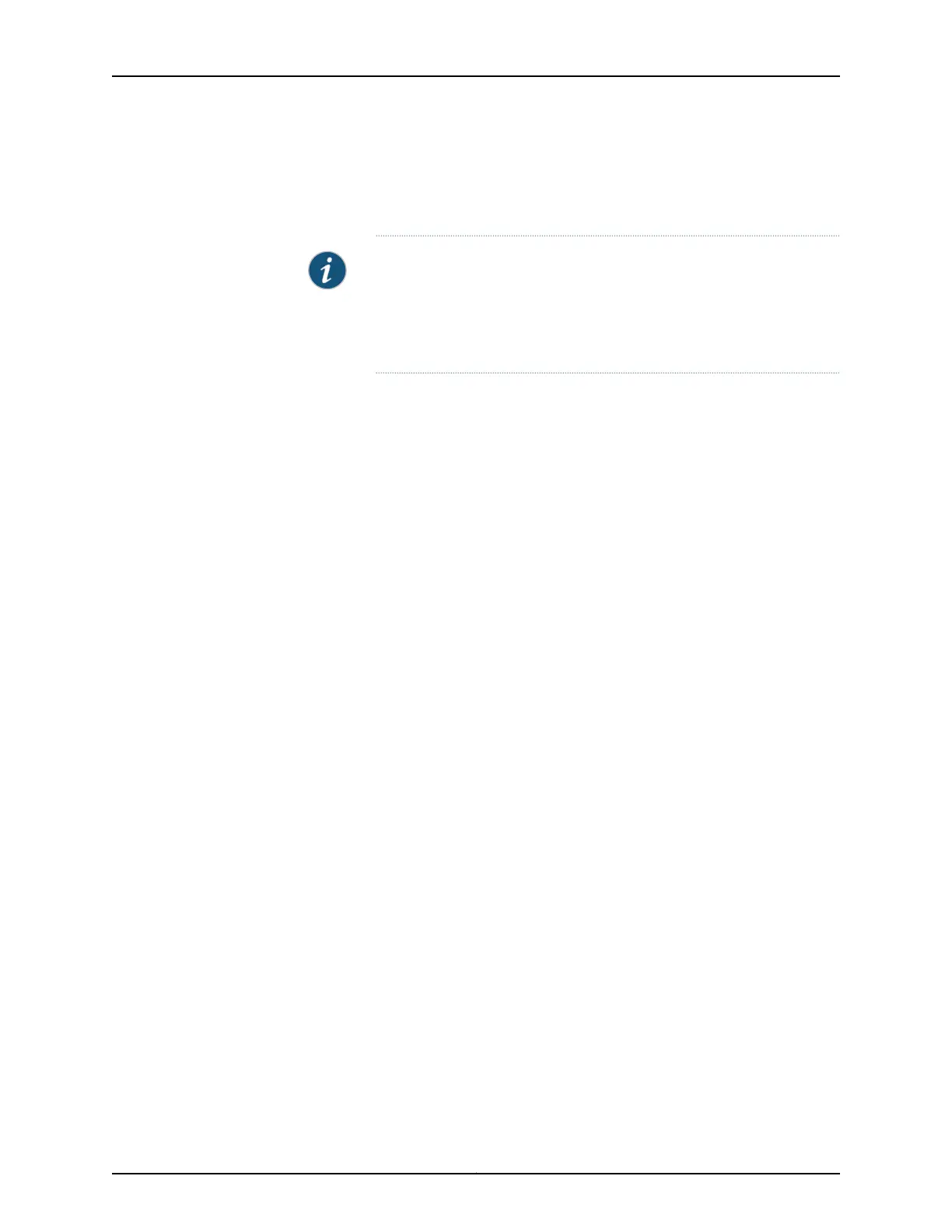Options drop—Drop packets with new source MAC addresses, and do not learn the new source
MAC addresses.
NOTE: On QFX10000 switches, If you include the drop option, you cannot
configure unicast reverse-path forwarding (URFP) on integrated routing
and bridging (IRB) and MAC limiting on the same interface. If you have
an MC-LAG configuration, you cannot configure MAC limiting on the
interchassis link (ICL) interface.
drop-and-log—(EX Series switches and QFX Series only) Drop packets with new source
MAC addresses, and generate an alarm, an SNMP trap, or a system log entry.
log—(EX Series switches and QFX Series only) Hold packets with new source MAC
addresses, and generate an alarm, an SNMP trap, or a system log entry.
none—(EX Series switches and QFX Series only) Forward packets with new source MAC
addresses, and learn the new source MAC address.
shutdown—(EX Series switches and QFX Series only) Disable the specified interface,
and generate an alarm, an SNMP trap, or a system log entry.
Required Privilege
Level
routing—To view this statement in the configuration.
routing-control—To add this statement to the configuration.
Related
Documentation
• Configuring EVPN Routing Instances
• Configuring EVPN Routing Instances on EX9200 Switches
• Configuring MAC Limiting (CLI Procedure)
• Configuring Persistent MAC Learning (CLI Procedure)
• Layer 2 Learning and Forwarding for Bridge Domains Overview
• Layer 2 Learning and Forwarding for VLANs Overview
• Layer 2 Learning and Forwarding for Bridge Domains Functioning as Switches with Layer
2 Trunk Ports
• Layer 2 Learning and Forwarding for VLANs Overview
• Layer 2 Learning and Forwarding for VLANs Acting as a Switch for a Layer 2 Trunk Port
1651Copyright © 2017, Juniper Networks, Inc.
Chapter 41: Configuration Statements

